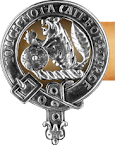Alfred the Great
King of Wessex
849-899A.D.
My 28th Great-Grandfather
Alfred was born in the village of Wanating, now Wantage, Oxfordshire. He was the youngest son of King Æthelwulf of Wessex by his first wife, Osburh.
Alfred was one of only two Kings of Wessex (England) to be called "the Great" (the other being King Cnut the Great).
Alfred was anointed as King at the tender age of four by Pope Leo IV in Rome in 853. This was NOT an actual coronation, but was meant solely to symbolize the coming expectancy of his role as King, as his father was very much still ruling at the time.
Alfred fought against the Viking invasions alongside his father during those bloody years. And in April 871 King Æthelred died, and Alfred succeeded him to the throne, as his younger brother.
In 868, Alfred married Ealhswith, daughter of a Mercian nobleman, Æthelred Mucil, Ealdorman of the Gaini. The couple went on to have 5 (proven and documented) children, but there may have been a sixth. One of which happened to be my 27th great-grandfather, Edward the Elder (869-924). He ruled as King of the Wessex from 899, upon the death of his father, until his own death in 924.
Although some Christians venerate Alfred as a saint, due to his tremendous reform, not only in politics, but in education, and the church as well, an attempt to have him canonized by Henry VI of England in 1441, was not successful.
Wikipedia.org has these interesting remarks regarding Alfred's burial, grave and remains:
"Death Burial and Remains
Alfred died on 26 October 899. How he died is unknown, although he suffered throughout his life with a painful and unpleasant illness. His biographer Asser gave a detailed description of Alfred's symptoms and this has allowed modern doctors to provide a possible diagnosis. It is thought that he had either Crohn's disease or haemorrhoidal disease.[7][131] His grandson King Eadred seems to have suffered from a similar illness.[132][g]
The royal graves and many others were probably rediscovered by chance in 1788 when a prison was being constructed by convicts on the site. Prisoners dug across the width of the altar area in order to dispose of rubble left at the dissolution. Coffins were stripped of lead, and bones were scattered and lost. The prison was demolished between 1846 and 1850.[135] Further excavations in 1866 and 1897 were inconclusive.[134][136] In 1866, amateur antiquarian John Mellor claimed to have recovered a number of bones from the site which he said were those of Alfred. These later came into the possession of the vicar of nearby St Bartholomew's Church, who reburied them in an unmarked grave in the church graveyard.[135]
Excavations conducted by the Winchester Museums Service of the Hyde Abbey site in 1999 located a second pit dug in front of where the high altar would have been located, which was identified as probably dating to Mellor's 1886 excavation.[134] The 1999 archeological excavation uncovered the foundations of the abbey buildings and some bones. Bones suggested at the time to be those of Alfred proved instead to belong to an elderly woman.[137]
In March 2013, the Diocese of Winchester exhumed the bones from the unmarked grave at St Bartholomew's and placed them in secure storage. The diocese made no claim they were the bones of Alfred, but intended to secure them for later analysis, and from the attentions of people whose interest may have been sparked by the recent identification of the remains of King Richard III.[137][138] The bones were radiocarbon-dated, but the results showed that they were from the 1300s and therefore unrelated to Alfred. In January 2014, a fragment of pelvis unearthed in the 1999 excavation of the Hyde site, which had subsequently lain in a Winchester museum store room, was radiocarbon-dated to the correct period. It has been suggested that this bone may belong to either Alfred or his son Edward, but this remains unproven.[139][140]"
****Did you guess correctly for the location of the 'Those Places Thursday' location? If you guess Notre Dame, in Paris, France, you would be correct! The gargoyle sitting on the left of the photograph, as well as the Eifel Tower seen in the distance, would have been a give away to anyone who has visited the city. Paris is a beautiful city at any time of year, and if you ever get the chance to visit you should!
This song always makes me wish for one more visit!












No comments:
Post a Comment